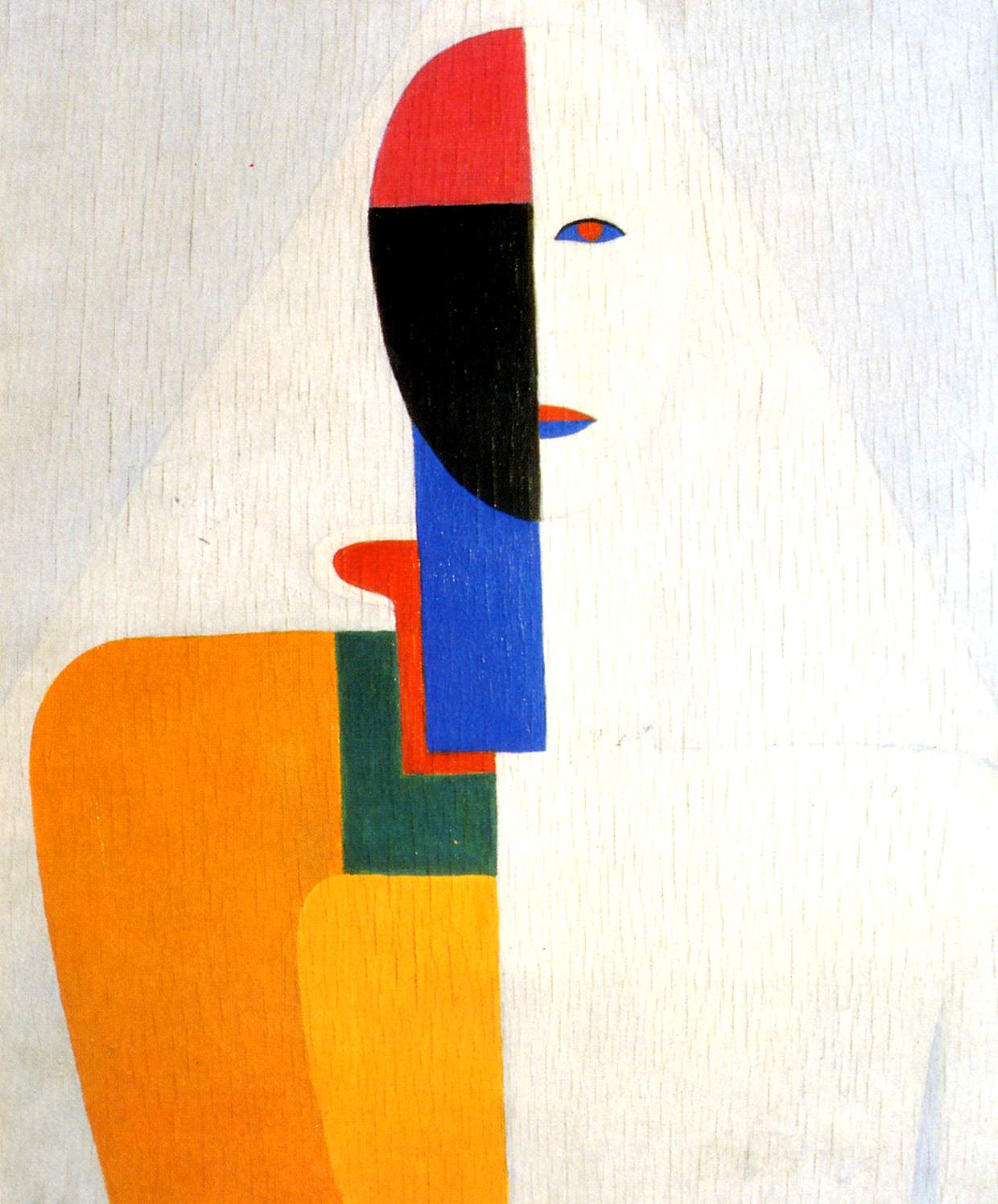all the times you come and then the
time you come to say good-bye
this
idea of standing
still
for thirty years
this
poem
which
grows from the
one
that came before it
which
will lead to the one that
comes
next and
all
of them without subtlety and
all
of them without nuance
without
meaning but
meaning
is overrated anyway
the
rich will continue to slaughter
the poor
no
matter how many sad little
songs
we sing
our
children will throw out our ashes
our
grandchildren will
forget
our names
the
future has always been the
best
place to go to
erase
the past

Woman Torso -- Kazimir Malevich
Though he worked in a number of distinct styles Kazimir Malevich (born Kazimierz Malewicz, the name with which he signed his works) was best known for his 1913 development of Suprematism, an art movement focused on basic geometric forms such as circles, squares, lines, and rectangles, painted in a limited range of colors. "Under Suprematism I understand the primacy of pure feeling in creative art. To the Suprematist, the visual phenomena of the objective world are, in themselves, meaningless; the significant thing is feeling, as such, quite apart from the environment in which it is called forth," he proclaimed. "Art no longer cares to serve the state and religion, it no longer wishes to illustrate the history of manners, it wants to have nothing further to do with the object, as such, and believes that it can exist, in and for itself, without 'things' (that is, the 'time-tested well-spring of life')." The beginning of Suprematism was his designs for the sets and costumes for "Pobeda nad Solntsem" (Victory over the Sun), a Futurist opera by Aleksei Kruchenykh that employed "Zaum" (beyond or behind the mind, translated as transreason or beyonsense), an experimental poetic language characterized by indeterminacy in meaning. (In his "Declaration of the Word as Such" in 1913, Kruchenykh wrote, "The worn-out, violated word 'lily' is devoid of all expression. Therefore I call the lily éuy – and original purity is restored.") Malevich's geometrically shaped costumes were made of simple materials, and flashing headlights illuminated the figures on stage in such a way that alternating hands, leg,s or heads disappeared into the darkness. His stage curtain was a black square, and one of his drawings for the backcloth depicted a black square divided diagonally into a black and a white triangle. For Malevich, Suprematism represented "a blissful sense of liberating non-objectivity [that drew me forth into a 'desert", where nothing is real except feeling." Absolute non-objectivity represented the future of the universe, in which appearances, objects, comfort, and convenience no longer dominate. He sought to produce a Suprematist journal called "Nul," because "in it we intend to reduce everything to zero.... Afterward we ourselves will go beyond zero." By 1915 he was exhibiting his first Suprematist paintings, with titles such as "Two dimensional painted masses in the state of movement," and "Black Square," "Black Circle," "Red Square," and "Black Square and Red Square" became some of his best-known works. His work was later banned by Soviet authorities. When he died at 57 in 1935, mourners were permitted to wave a banner bearing a black square, and his ashed were buried in a grave marked with white cube bearing a black square, but his wish to have his grave topped with an “architekton” (his skyscraper-like maquette of abstract form) equipped with a telescope through which visitors were to gaze at Jupiter was not granted.
ReplyDelete